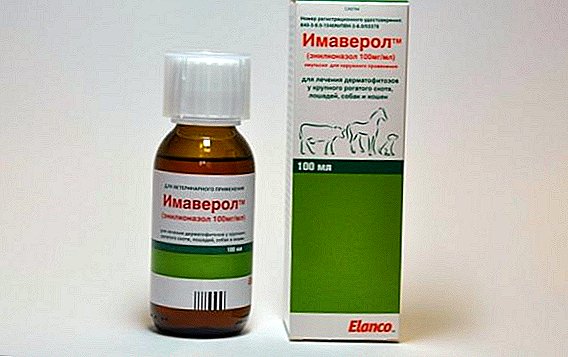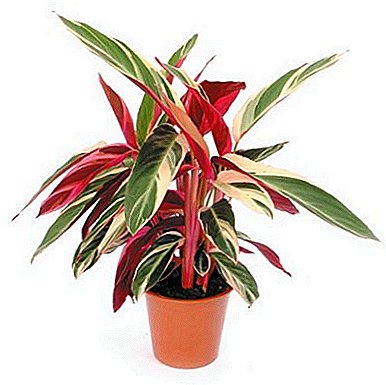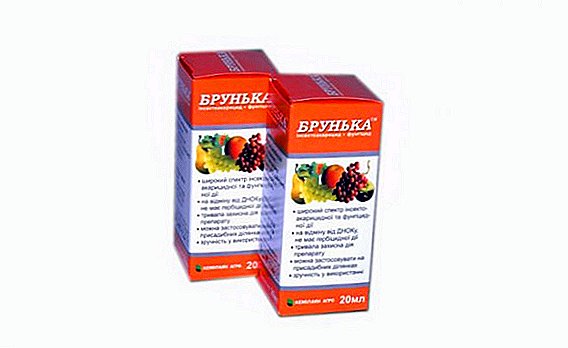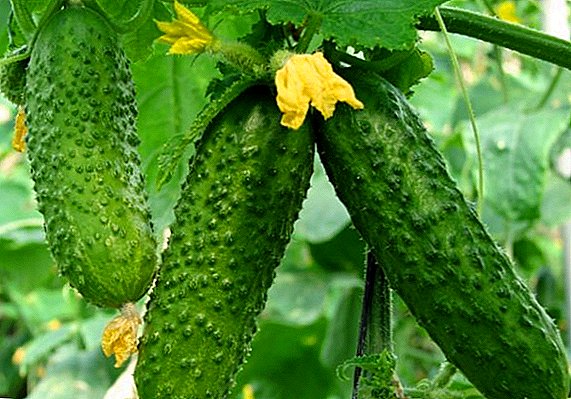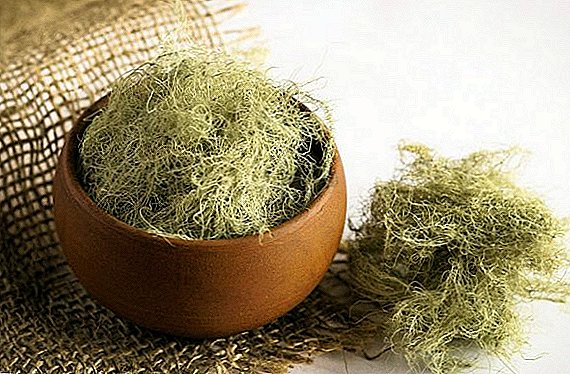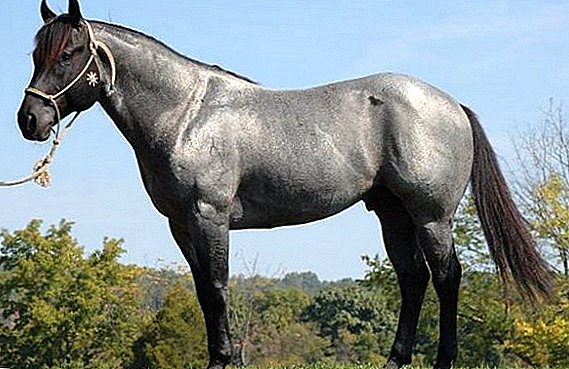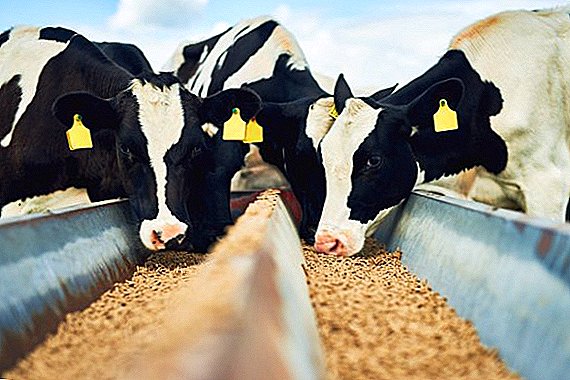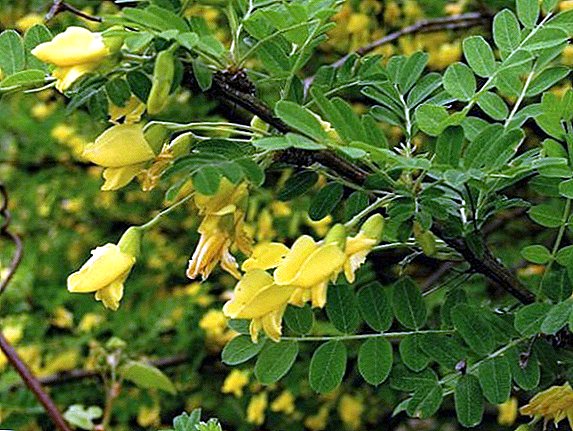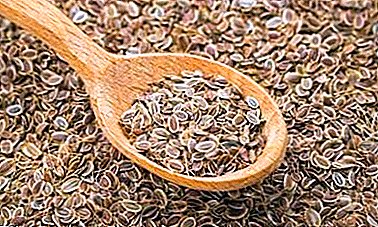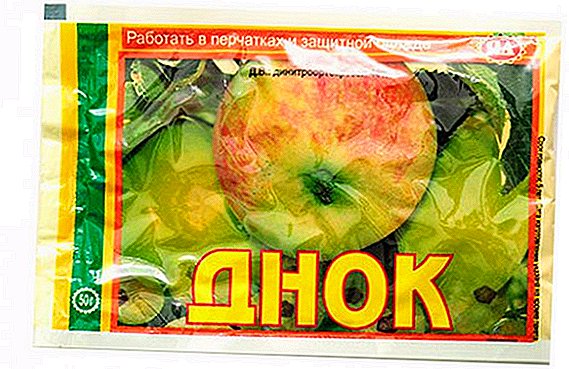 The owners of country plots have a lot of trouble. Pests and diseases of all kinds are especially annoying to them - it is noticed that from year to year they become only more resistant to the action of traditional treatment solutions. So you have to resort to potent formulations (for sure). Consider one of these tools, learning more about the drug called "DNOC" and about what its use boils down to.
The owners of country plots have a lot of trouble. Pests and diseases of all kinds are especially annoying to them - it is noticed that from year to year they become only more resistant to the action of traditional treatment solutions. So you have to resort to potent formulations (for sure). Consider one of these tools, learning more about the drug called "DNOC" and about what its use boils down to.
Is it allowed or not?
To begin, find out how "legal" is the use of this composition.
On the web you can find a lot of reviews about it, and these opinions are directly opposed. Some people like the effect of the treatment, while others are extremely dissatisfied with them.
Let's try to figure it out. The fact is that "DNOK" is a potent composition and is used for processing vineyards and other plantations on an industrial scale. Even on such large areas, processing is allowed no more than 1 time in 3 years.
Because of its "vigor" means does not appear among the drugs allowed for sale gardeners or gardeners. That is, its use on private farms and areas within the residential area is prohibited.  Nevertheless, many "private traders" use it on their sites. True, for this they have to accurately calculate the dose and maintain the interval between treatments, not forgetting the possible consequences.
Nevertheless, many "private traders" use it on their sites. True, for this they have to accurately calculate the dose and maintain the interval between treatments, not forgetting the possible consequences.
The composition of the drug
To obtain it does not require a huge amount of "ingredients" and all sorts of catalysts. In fact, it is a mixture of ammonium salt and dinitroorthozole in the proportion 60/40. Available as 40% phenolate. Sodium or ammonium sulfate can act as a filler.
Important! This is not the only name for a potent agent. It may also be sold as "Selinon", "Synox", "Headlit", "Dinosaur", "Dinon", "Cresoton". If the plans - processing a small garden, this pack is better to put aside.
As a result of this "mix" comes out a yellow granular powder with a characteristic strong odor. Simple at first glance, the composition provides a means of a wide range of actions.
The instruction emphasizes that DNOC as a basis for treating plants has fungicidal (antifungal), insecticidal and herbicidal properties.  It is poorly soluble in water, and organic solvents are most often used to obtain a large volume of working fluid.
It is poorly soluble in water, and organic solvents are most often used to obtain a large volume of working fluid.
Active ingredient and mechanism of action
The main substance is 4,6-dinitro-o-cresol. The solution, falling on the leaves and stems, destroys the cells of harmful fungi, interrupts the disease itself at an early stage and eliminates insects - the causative agents of such diseases.
The effect after spraying occurs after 3-4 days, although the very penetration of dinitro-o-cresol into infectious spores usually takes 2 days. This is enough to neutralize the source of infection and eliminate it in a short time. A lasting effect is observed for at least a month.
When and how is the fungicide applied?
The main processing period is early spring. It is necessary to “catch” the moment even before bud break, when a stable temperature is established at + 4 ... +5 ° C.
Experienced gardeners know that this is the best time for such work: the juices are still not circulating, and harmful insects are still at the wintering stage, so they are easy to clean.
Did you know? At the origins of domestic agrochemistry stood DI Mendeleev. The legendary scientist was interested in the effects of lime and superphosphate on the subsurface soil layers.
Among the "clients" of the powerful solution are aphids, scale insects, various mites, suckers, leaf fleas and other carriers of diseases that they like to gather in trees and shrubs.
Much less often the preparation is used at autumn processing. There will have to wait until the leaves fall. Consider the moment that even in low concentrations, the solution can be applied no more than 1 time per 3 seasons. Frequent spraying will do more harm than good.  When preparing the mixture, try not to splash it. As we already know, the powder is reluctantly diluted in water. Many find a way out by making the solution in this way:
When preparing the mixture, try not to splash it. As we already know, the powder is reluctantly diluted in water. Many find a way out by making the solution in this way:
- 50 g of the fungicide (standard packaging) is carefully diluted in a 1-2 l tank.
- Then the resulting concentrate is poured into a 10-liter container, not forgetting to mix intensively.
Now let's see what the consumption rates for different crops.
Apple tree, pear, quince
Here, the concentration will be one of the most saturated - 100 square meters. m plantings will require 15 liters of solution.
Important! The presence of a soil near an array of trees or bushes, used for planting vegetables or other crops, significantly increases the complexity of the procedure. "Border" areas are often covered with a film that prevents fluid from entering the soil. This maintains its balance.
Timely spraying will prevent scab, moniliasis and various kinds of spots on the leaves. Aphids and leafworms will also have a minimum of chances. 
Peach, apricot, cherry, plum
On the same area will have to take no more than 10 liters. This will prevent the development of moniliozu and klyasterospiozy. Significantly reduces the risk of characteristic curliness. Ticks and scale insects do not tolerate such solutions.
Gooseberry, currant
Actively growing bushes with powerful rhizomes require an appropriate dose of 15 l / 100 "squares".
Leaves will not be taken to stained and curled. The appearance of a leaf flea or moth plaque is unlikely, and this is a manifestation of the strong insecticidal effect of this agent.
Grapes
The use of such powerful drugs as DNOC for the processing of grapes has its own characteristics.
Experienced gardeners often use such fungicides as "Abiga-Pik", "Fundazol", "Khom", "Tiovit Jet", "Phytodoctor", "Thanos", "Oksihom" to combat various grape diseases.
With the onset of heat will have to do pruning, which will not allow the spread of malicious larvae and disputes. They begin to spray immediately after such thinning, without waiting for the “launching” of the juices along the branches.  Consumption - about 8 liters per area of 100 square meters. m. After that, you can forget about the medias and ticks for the whole season. If you have time in time, even in early spring, you can protect the vineyards from painful "rust", which often affects the leaves in early summer. In the same list appear septoriosis and anthracnose.
Consumption - about 8 liters per area of 100 square meters. m. After that, you can forget about the medias and ticks for the whole season. If you have time in time, even in early spring, you can protect the vineyards from painful "rust", which often affects the leaves in early summer. In the same list appear septoriosis and anthracnose.
Did you know? From the beginning of the 1960s to the very collapse of the USSR, he held the world leadership in the production of mineral fertilizers. On the other hand, many collective farms simply had nowhere to store the “feeds” they received, and this turned out to be two extremes — often the soils were oversaturated with nitrogen or did not bring valuable material to the field at all, dumping them into ditches.
You have probably noticed that large areas are indicated in the instructions. This is logical, because the main consumers of the solution are large farms with huge gardens. Farmers need to pay special attention to "safety" when working with a strong tool.
Cautions
The powerful complex effect of the drug requires careful handling of both the powder and the working fluid. In addition, yellow granules are highly toxic and explosive.
If we take "according to science", then it is possible to spray bushes or plantings only at a considerable distance (up to 1 km) from residential houses and pastures.  That is, it is not suitable for a private courtyard. The same applies to the densely developed dacha cooperatives, although in practice many people ignore this requirement.
That is, it is not suitable for a private courtyard. The same applies to the densely developed dacha cooperatives, although in practice many people ignore this requirement.
The rest of TB comes down to these points:
- Be sure to use closed rubberized clothing, boots and respirator (ideally - gas mask). The head must be covered.
- Do not allow liquid to enter exposed skin, mucous membranes, and especially inside the body.
- Processing is carried out only in the absence of wind.
- Presence while spraying other people or pets is undesirable. This also applies to neighbors in the area.
Important! Contaminated clothing can not be taken with bare hands, it is fraught with skin irritation, which can not be "washed off" in one step.
- After work, the sprayer should be thoroughly rinsed, avoiding discharge into open water bodies or into sewage.
- Do not forget about hygiene. After removing contaminated clothing, take a shower or at least thoroughly wash yourself.
 The danger of this composition lies not only in the risk of damage to the respiratory tract and skin. With a deep effect, it can disrupt the metabolism or cause severe poisoning, which in some cases becomes chronic.
The danger of this composition lies not only in the risk of damage to the respiratory tract and skin. With a deep effect, it can disrupt the metabolism or cause severe poisoning, which in some cases becomes chronic.To do this, even a small amount of solution ingested is sufficient. Be extremely careful.
Term and storage conditions
The shelf life of the powder is 3 years, the date of issue is indicated on the package. Such bags are stored in dark, dry places, away from food, food containers (jars, boxes, pans) and containers with fuel-lubricating liquids.
The presence in the air of gasoline vapors or "diesel" is excluded - the powder is explosive. Naturally, harvested packs should not fall into the hands of children.
Did you know? At the beginning of the twentieth century, fertilizers were called "fat". This word was used by landowners and agronomists, and it was out of use only by the end of the 1930s.
 Now you know what is useful (and at the same time dangerous) "DNOC" and with what doses for different cultures the instructions for use operate. We hope that in pursuit of the effect you will not risk your health and those around you, but will intelligently take into account all factors. Good harvest!
Now you know what is useful (and at the same time dangerous) "DNOC" and with what doses for different cultures the instructions for use operate. We hope that in pursuit of the effect you will not risk your health and those around you, but will intelligently take into account all factors. Good harvest!

